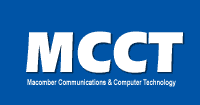|  in digital signal processor (DSP)
resource technology is called TiNG. TiNG is a DSP architecture – a
real-time operating system for Prosody DSPs – that provides run
time management of loadable firmware modules. It gives an application
total control over the capabilities offered by a DSP as a whole, and
the capabilities of each individual channel.
in digital signal processor (DSP)
resource technology is called TiNG. TiNG is a DSP architecture – a
real-time operating system for Prosody DSPs – that provides run
time management of loadable firmware modules. It gives an application
total control over the capabilities offered by a DSP as a whole, and
the capabilities of each individual channel.
Many media processing resource cards support a fixed set of functions
per card, or perhaps per DSP – TiNG allows a developer to choose
multiple functionality, within the capacities of each individual DSP,
to create the most cost-effective communications solution.
Furthermore, TiNG is the framework, along with V6 telephony software,
on which all Aculab’s new developments and next generation hardware
such as Prosody X are based.
Wouldn’t it be good if you could purchase one DSP card and configure
it via software to perform a range of functions under developer’s
or integrator’s control? This was the challenge Aculab engineers
set out to meet. Single function cards were the first offerings to market
and are fine in specific product solutions. However, as markets converge,
the ideal is to minimise the change to existing applications by using
the same API with the same hardware. This has to mean faster time to
market with the inherent flexibility to seize project opportunities as
they arise. TiNG allows this opportunity to be realised, enabling the
best in tailored solutions to be created.
|
|
 |
Prosody with TiNG offers some substantial performance enhancements.
Using TiNG, developers can mix and match algorithms or functions,
affording maximum versatility . For example, the same DSP can
concurrently process A-law or M-law audio, perform IVR or host
based speech recognition feeds, and operate some data or fax
modems. TiNG’s flexible data transfer mechanism overcomes
the inherent latency in fixed buffer size transfers, and provides
access to the 64kbits/s B-channel for a range of generic data
communications protocols and modems.
TiNG was designed to be flexible and so does not have a fixed
resource management scheme. This brings increased choice for customers,
who can obtain channel count figures for each specific requirement.
Furthermore, it's possible to trade-off channels performing one
set of tasks for channels performing another.
For instance, using Prosody with TiNG, an in-bound voice response
system may also be capable of sending and receiving faxes. During
office hours it would be characteristic to run more channels of
IVR than fax, but you can dynamically increase the number of fax
transmission channels, with fewer IVR channels, outside normal
office hours or during quiet periods, making optimal use of the
system.
Because it is possible to mix fax and speech functionality on
the same DSP, developers have the freedom to create smaller, more
cost-effective systems
The table below shows features supported on Prosody and how many
instances of each feature may be achieved. TiNG allows you to download
the precise set of functionality you require to a DSP – similar
to having a very large number of firmware builds. This means, for
any combination of algorithms, you can maximise your channel count
. Selection of the resource combination is under the developers’ control,
providing an optimised, concentrated, ‘fine tuned’ solution.
This flexible approach to DSP configurability minimises costs and
maximises competitive edge.
When features are mixed in the same DSP, there is an overhead
for each algorithm to run, so the relationship between features
and channel counts are not linear, and some combinations will produce
better channel counts than others. There is a TiNG utility tool
to calculate optimum feature mix combinations.
TiNG is a DSP architecture for use on Aculab’s Prosody PCI
or Prosody CompactPCI (cPCI) cards.
|
|


